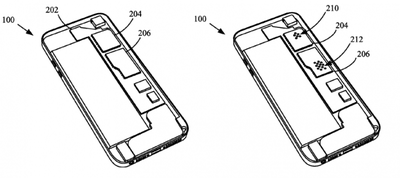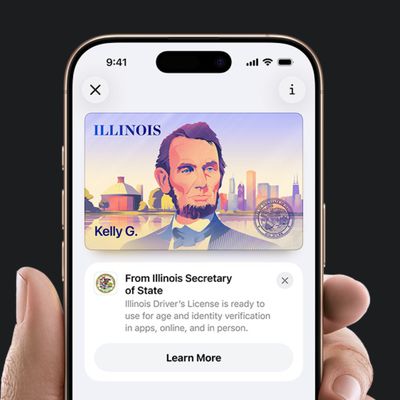The U.S. Patent and Trademark Office today published a patent application created by Apple, detailing a method for the extensive waterproofing of various components within a device, possibly an iPhone, thus creating a completely waterproof smartphone without the need of a special case (via Patently Apple).
Originally filed in September of 2013, the patent application describes a "hydrophobic coating" to be layered onto integral parts within a device, like its printed circuit board. Apple describes achieving this using a "plasma-assisted chemical vapor deposition (PACVD) process" that would adhere the coating substance onto the surface of the printed circuit board in such a way as to not take up much additional room in the already small casing of a smartphone.

In the bigger picture, immersing electronic devices in water generally has predictably negative results. Through testing it has been determined that high voltage power components are more likely to short or malfunction after only brief exposure to liquids or moisture. More specifically, exposed metal areas having high voltage differentials in close proximity can easily experience short circuit events when corrosion or water immersion bridges the gap between such areas.
By providing an insulating layer or barrier around these highly susceptible parts, water resistance can be substantially increased without obscuring functional openings leading into a device housing of a particular electronic device. A thin hydrophobic (i.e., water resistant) conformal coating having a thickness between at least one and ten microns can be applied to a substrate using a plasma-assisted chemical vapor deposition (PACVD) process. The PACVD process charges the surface of the substrate so that the coating can be bonded to the charged surface.
Though not completely waterproof as Apple's new patent intends a device to be, Tim Cook recently stated that the company's upcoming Apple Watch will in fact be a bit more water resistant than previously thought. He stated that he wears his personal Apple Watch everywhere, "even in the shower." If so, the Watch will be the company's first device with such a water resistant claim.
While the patent application doesn't specifically state what device the waterproof process could be attributed to, it's easy to see the company reasoning the method for use on iPhone and iPad. Although, like with all other patents, the practicality of a completely waterproof iPhone launching anytime soon is highly unlikely, but it's always an interesting glimpse behind the scenes regarding what the company may be considering for its future.
























Top Rated Comments
Do people still not understand how patents work? I'm sure Liquipel patented their method for waterproofing. And here we see Apple patenting their own method. Ideas (like waterproofing a device) can't be patented. Only methods to do so can be patented.
Ideally there will be hundreds of different patented methods to accomplish an idea (from many different companies/entrepreneurs/innovators) and the best one wins in the marketplace. Then when the patents expire, humanity gets to use them all.
To advertise a product as 'waterproof' suddenly opens up a whole new world of problems - if the phone fails because the internal components are liquid damaged, would that be covered under warranty? Would there be grounds to go through consumer rights, because the phone was advertised as waterproofed and yet was damaged by water? Would liquid damage still not be covered under warranty, in which case why advertise it as being waterproof?
If liquid damage is covered under warranty on a phone advertised as being waterproof, then that means the manufacturer is accepting a much larger liability -- one that could simply be avoided by waterproofing the phone, but not advertising or confirming that this is the fact.
With the greatest of respect, Sony using and heavily advertising waterproofing on their Xperia Z3 as one of many features to try and stand out in a profit-struggling market (Android phones) is very different to the consistently top-selling iPhone suddenly becoming waterproofed. If Apple reject one warranty claim, then everybody will hear about it, the news will go ballistic, and they'll probably have a lawsuit on their hands. You must appreciate the difference.
If you read the patent, it describes a method for waterproofing, not a product for waterproofing.
Basically they give a negative or positive charge to a component, and then apply the plasma process with the opposite charge to create an extremely thin layer of protection.
This isn't a "we patented waterproofing" patent, which would not be valid anywhere. This is a patent for Apple's specific method of implementing waterproofing.
----------
This guy gets it!
I don't understand why people don't get what a patent is.
Sounds like he's trolling.
Reminds me when people thought that iOS 7 (or was it 8?) made the phone unshatterable.
Keep up the good work x
Originally filed in September of 2013, the patent application describes a "hydroponic coating" to be layered onto integral parts within a device, like its printed circuit board. Apple describes achieving this using a "plasma-assisted